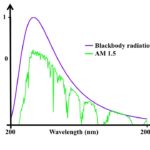Calculations of water pumping system design
A water pumping system pumps the groundwater to the surface for its usage. The pumping system requires two major components, mentioned below.
- A water pump that has a motor in it for pumping purposes, and
- A power source to run the water pump.
When a grid is present nearby, the power to run the water pumping system can be taken from the grid. But in remote areas, there is usually no accessibility to the grid. In such circumstances, solar (PV) systems can provide this necessary power to pump water for drinking and irrigation purposes. The water pump design is initiated by calculating the discharge of water that is required. The discharge relates to the daily water consumption of the local area for which the water pumping system is being designed.
This discharge can be in cubic meters per hour, gallons per minute (US and UK), and cusec-cubic feet per second. For simplicity, the discharges are all converted to cusec form. The Eqs. 1-3 gives these conversions.
From cubic meter per hour to cusec
From US gallons per minute to cusec
From UK gallons per minute to cusec
After finding the discharge, we need to calculate the total dynamic head (TDH) of the water pump designs. The total dynamic head can be estimated by finding different heights and lengths as shown in Fig. 1.

The total dynamic head is a sum of the static head (Hs), Drawdown (Hdd), water fluctuations (Hwf), pumping housing height (Hphh), and friction loss (Hf) as shown in Eq. 4.
In order to calculate the TDH from meter to feet, TDH in meter can be divided by 3.28084.
The power of the motor in horsepower (HP) of the water pump can then be calculated by employing Eq. 5.
where 62.5 is the density of water in pounds/ft3 and η is the efficiency of the pump. This power can be converted into kilowatts (kW) by the following conversion with the addition of compensating factor of 1.25.
After the design of the water pumping system, the number of panels can be calculated using the PV system design calculator.
Further readings
If you liked this post, you may be interested in reading the following closely related posts.
- Refractive Index Calculator both simple and complex

- Blackbody radiation calculator for specific wavelengths and temperatures

- Complex number calculator with one and two inputs

- Water pumping system design calculator using solar energy

- Payback period calculator for solar PV system

- PV system design calculator for Grid-tied/standalone with battery backup

- Wavelength, Frequency, and Energy calculator


Good day! I could have sworn I’ve been to this blog before but after checking through some of the post I realized it’s new to me. Anyways, I’m definitely delighted I found it and I’ll be book-marking and checking back often!
Thankyou for this rattling post, I am glad I discovered this site on yahoo.